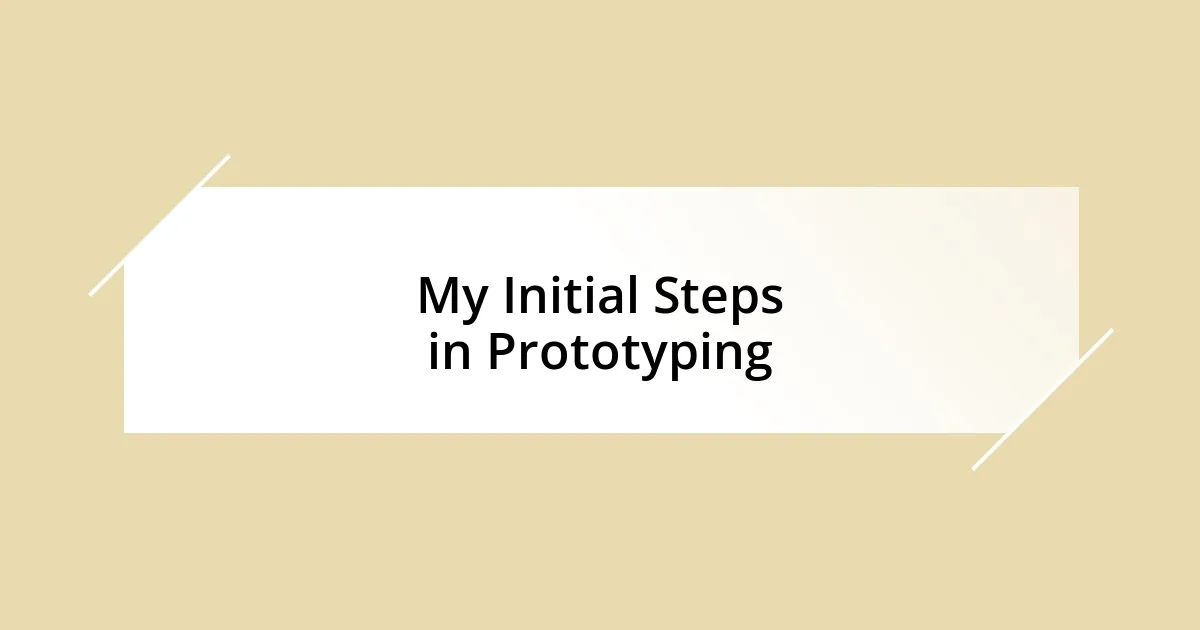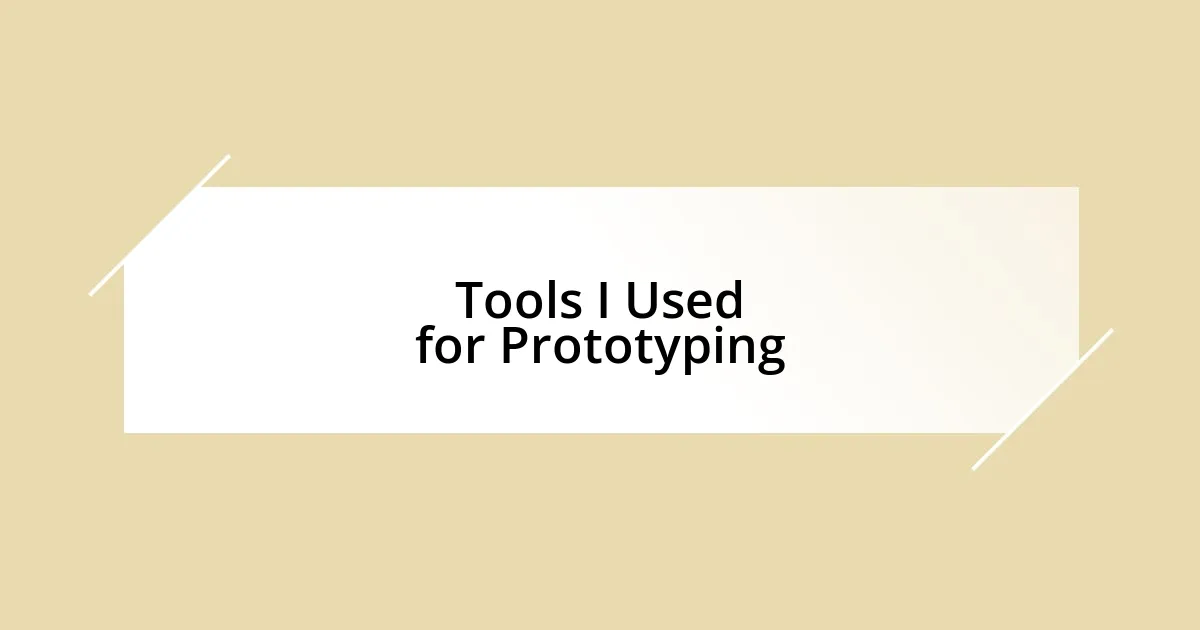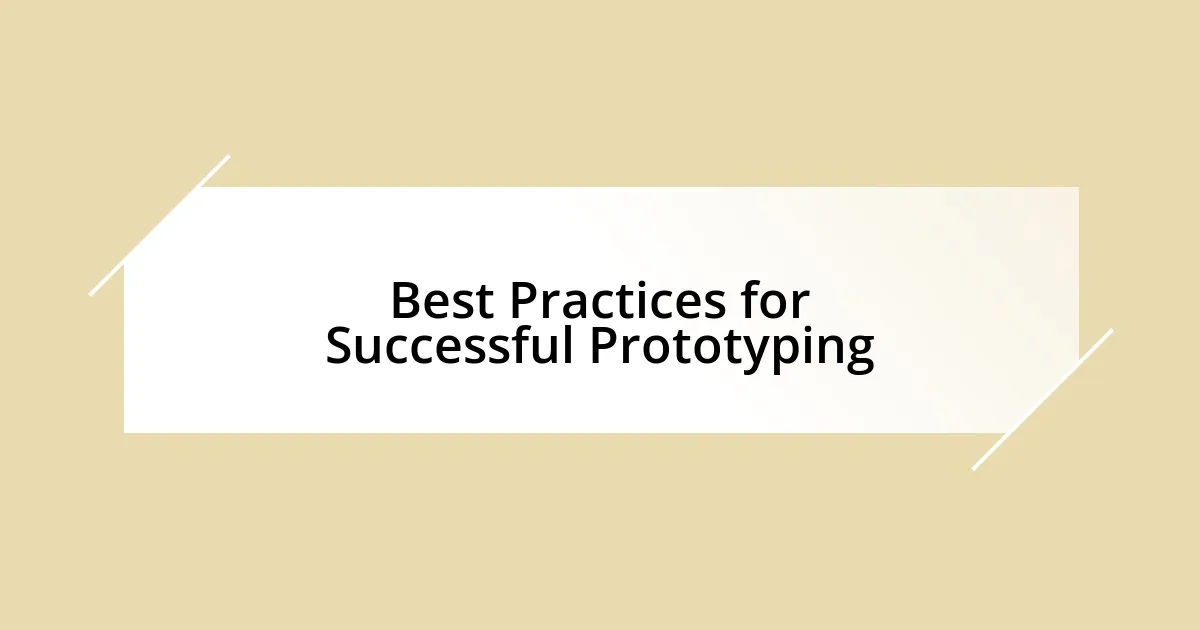Key takeaways:
- Rapid prototyping techniques like 3D printing enable quick iteration and foster creativity in product design.
- Utilizing tools like Fusion 360, Ultimaker 2, and laser cutters significantly enhances the prototyping process.
- Establishing clear objectives, embracing feedback, and testing frequently are essential for successful prototyping.

Introduction to Rapid Prototyping Techniques
Rapid prototyping techniques have fundamentally transformed the way we approach product design and development. I remember the first time I utilized 3D printing to create a model for a concept I had been brainstorming for weeks. Seeing my idea materialize within hours was exhilarating and reaffirmed the power of rapid prototyping.
These techniques, which include methods like 3D printing, CNC machining, and laser cutting, allow designers to iterate quickly. Have you ever felt the frustration of waiting weeks for a prototype? I have. Rapid prototyping alleviates that pain, enabling us to test and refine our ideas faster than ever before.
What really excites me about rapid prototyping is its ability to foster creativity and innovation. By making it so easy to create tangible models, it encourages us to think outside the box. I often find myself coming up with ideas I would have dismissed earlier, knowing I can quickly bring them to life. How has exploring rapid prototyping techniques changed your approach to design?

My Initial Steps in Prototyping
When I first delved into the world of prototyping, I approached it with a mix of excitement and trepidation. My initial step involved sketching out my ideas—the messy, hand-drawn sketches full of annotations that felt like a personal conversation with myself. This process allowed me to sift through my thoughts and pinpoint what was truly worth pursuing.
- I found a local makerspace that offered 3D printing workshops.
- Attending my first session, I was amazed by the vibrant community of creators.
- The hands-on experience of designing and printing my first model was both daunting and invigorating.
- Each misstep became a lesson, teaching me that iteration is not just acceptable, but essential.
Going from paper to a physical object was surreal. I still remember the rush of seeing my first prototype emerge from the printer—it was like watching a dream take shape. Each layer added felt like a validation of my ideas, igniting a spark that pushed me to explore even more intricate designs.

Tools I Used for Prototyping
In my journey of rapid prototyping, I relied heavily on a few core tools that truly enhanced my creative process. One standout was Fusion 360, a powerful 3D modeling software. It allowed me to sketch ideas digitally and see them evolve in real-time. The first time I exported my design for 3D printing, I felt an exhilarating mix of anxiety and excitement, wondering if it would turn out just like I envisioned.
Another invaluable tool was the affordable, user-friendly Ultimaker 2 3D printer I purchased. It was a game changer, giving me the freedom to produce prototypes at home. I vividly recall the night I printed my first fully functional prototype—it was thrilling to hold something that once only existed in my mind. It reminded me of the sheer joy of creation, empowering me to experiment with various materials and designs.
In my pursuit of accuracy, I also utilized a laser cutter. I was blown away by its precision, especially when creating intricate designs that required perfect cuts. The first time I watched the laser elegantly etch out a complex pattern, I was in awe. It reinforced my belief that combining traditional craftsmanship with modern technology is a recipe for innovation.
| Tool | Experience |
|---|---|
| Fusion 360 | Transformative for digital modeling, allowed real-time evolution of designs. |
| Ultimaker 2 3D Printer | Empowered me to create functional prototypes at home; felt like an artist and inventor. |
| Laser Cutter | Provided precision for intricate designs, showcasing the fusion of craft and tech. |

Best Practices for Successful Prototyping
When it comes to successful prototyping, clarity in your vision is paramount. I often ask myself: What am I trying to achieve with this prototype? This question has served me well, as it forces me to define my objectives before diving into the technical aspects. Setting clear goals not only streamlines the design process, but it also keeps me focused, especially when I encounter unexpected challenges along the way.
Moreover, embracing feedback is crucial. I remember the first time I shared a prototype with my peers. Their critiques stung a bit, but it was enlightening. Each piece of feedback revealed a new perspective, enhancing the overall quality of my work. Engaging others early can unveil insights I might overlook, prompting me to iterate more effectively and refine my designs.
Lastly, I learned the importance of testing early and often. The first prototype I created didn’t function as intended, which was disheartening at first. But looking back, that misstep was incredibly valuable. It reinforced my understanding that each failure serves as a stepping stone to success. Rapid testing allows for quicker adjustments, fostering a culture of experimentation and innovation that propels the entire prototyping process forward.














